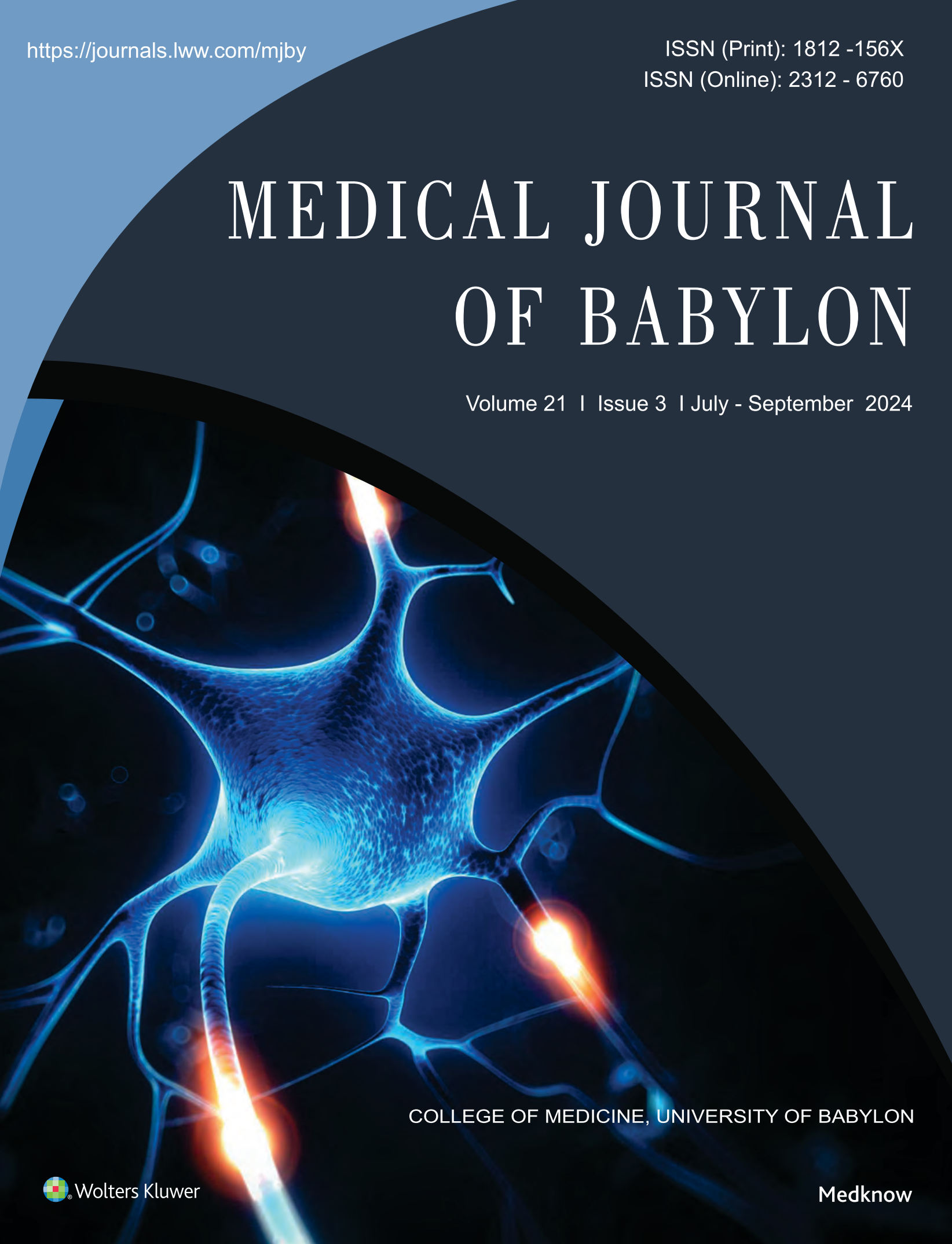Abstract
Background And Purpose Concha Bullosa is an air pocket (pneumatization in the middle turbinate. Turbinate's are the part of your nose that warms and humidifies the air you breathe. Concha bullosa is a very common anatomical deviation. While it does not necessarily predispose you to sinus problems, persons with enlarged turbinates and concha bullosa may have a blockage which prevents their sinuses from draining properly resulting in frequent sinus infections. This condition may require surgical intervention. This surgery is generally done in a same day setting using an nasal endoscope .
The incidence of middle turbinate pneumatization, or concha bullosa, has been well described in the literature. However, to our knowledge, no study has evaluated concha bullosa in relation to sinonasal disease in our Babylon province/Hilla General Teaching Hospital/Otorhinolaryngology Depts. sought to analyze the incidence of concha bullosa and any correlation with Para nasal sinus disease.
Methods: A prospective study of 52 consecutive paranasal sinus CT studies conducted between February-July 2011 at Hilla general teaching hospital/Otolaryngology dept. All examinations were performed for evaluation of a symptom referable to the sinonasal region By endoscopic examination of the nasal cavities ,lateral wall structures, with coronal CT Scan of the sinuses in 3 mm slices antroposteriorly. Paranasal sinus inflammatory disease including polyposis was identified and graded as mild, moderate, or severe. Sphenoid, ethmoid, maxillary, and frontal sinuses were each graded separately on both sides. If a concha bullosa was present, it was graded in size as small, moderate, or large. If bilateral concha were present, sizes were compared and when one was larger, it was identified as dominant. When nasal septal deviation was present, it was graded as mild, moderate, or severe. The direction of nasal septal deviation was identified as the face of the convex surface.
Results: There was a clear association between the presence of a unilateral concha, or a dominant concha (in the case of bilateral concha), and the presence of sinonasal disease(P < .0001). Moreover, there was a significant relationship between the presence of concha bullosa and deviation of the nasal septal to the contralateral side (P < .0001). From 52 CT Scan of sinuses,there is 24 patient have variant types of concha Bullosa, 14 of patients with concha bullosa had paranasal sinus inflammatory disease.14 cases are of Bullous type & 10 cases lamellar type.18 cases are bilateral, 4cases on the Rt. & 2 cases on the LT.(Fig.1,2,3)
There is male predominance 16 male, 8 female. Age range from 18-60y. mosly between 30-40y
